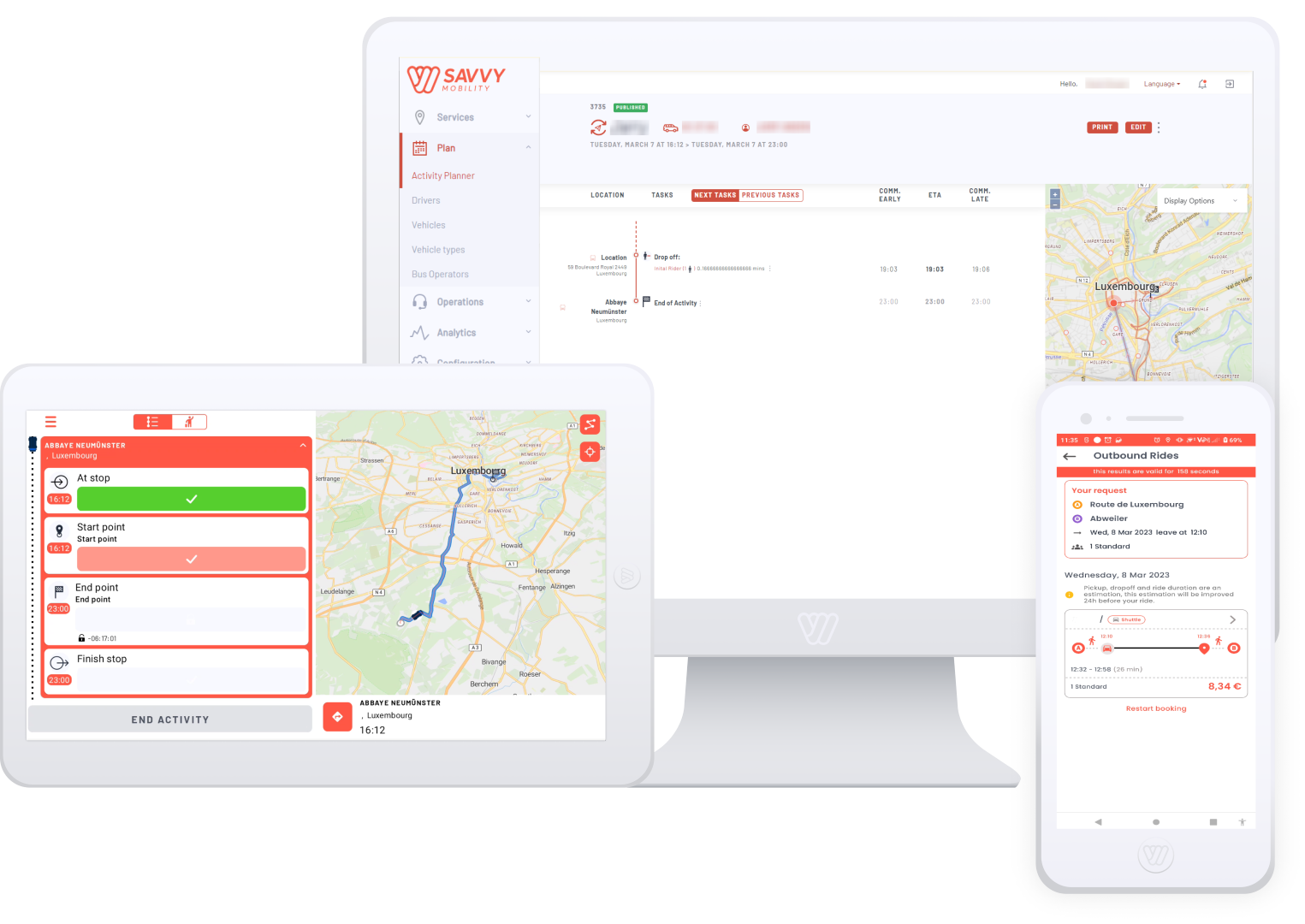Users still prefer to move around with private vehicles rather than public transport. Yet, while originating from higher convenience, this preference is not sustainable as discussed in our previous blog entry. There, we also suggested that On-Demand Mobility has the potential to marry both worlds of convenience and sustainability. But how does On-Demand Mobility work in practice?
As a passenger, how do I get around using a transport service based on On-Demand Mobility software? In this blog, we will address this question.
Savvy Rider
To start using On-Demand Mobility, I log in to and check my travel options on Savvy Rider application of my transport operator or any travel planning app where the On-Demand service in question is connected to (alternatively, a hotline can be enabled to do the same through a phone booking). The pick-up and drop-off point of my intended trip can be the physical bus stops of the network, but also closer virtual stops or even addresses (door-todoor) depending on the service setting. Once I have found a preferred travel option, I can directly book it on the app and pay the ticket.
Savvy Driver
As soon as the confirmed trip is registered, the driver of the bus operator in my area best positioned will automatically receive navigation and pick-up instructions to deliver my trip through Savvy Driver application. Since On-Demand Mobility is a shared service, users with different journey requests will be pooled, so the driver picking me up may have to pick up other people before me and drop us off in different places. The tablet or smartphone of the driver will contain a list of trips the order of which is optimised in real time and might include last-minute changes as long as they are possible within my promised arrival time.

Savvy Optimizer
Now, how is this list established? This is where the core functionality of each On-Demand Mobility software kicks in: Savvy Optimizer, a powerful optimisation algorithm that pools trips in real-time and takes both pre-booked and real-time requests into account, to calculate the best combination of booked and potentially new trips. This state-of-the-art technology allows On-Demand Mobility to go beyond legacy demand-responsive transport that required user to book hours in advance – the possibility to book in real-time is crucial to match the convenience of a personal vehicle!
Learn more about our modulesSavvy Mapper
To achieve this, Savvy Optimizer communicates with Savvy Mapper. This module accounts for the cartography, the road network, and traffic conditions in real time. It provides the necessary information to take the corresponding pooling and routing decisions. For instance, the Mapper can take into consideration that a vehicle surpassing a certain weight cannot take a particular street or of a certain length cannot take certain turns.
Savvy Manager
To make all this work within needs and constraints of the local business logic and service settings, Savvy Manager – the dispatching and controlling web interface – allows operators to manage the entirety of the operation. For example, here the number of busses in the fleet can specified, how many of them have space for wheelchairs, maximum detour and waiting times for users, handle phone bookings, etc. Basically, the type of options I am being shown on Savvy Rider app depends on the possibilities the operator has configured on Savvy Manager.
In summary, On-Demand Mobility works thanks to modern app technology, state-of-theart real-time optimisation algorithms, and flexible tools that account for a wide array of local business needs and constraints. In doing so, it optimizes vehicle occupancy, ensuring no vehicle runs emptier than it should thus reducing CO2 emissions and contributing to a greener world.
Contact us to talk about your project!